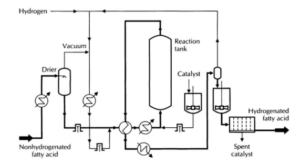Introduction
Bandar Imam Petrochemical Company, located on a land of about 270 hectares, on the northwest side of the Persian Gulf in Khuzestan province, 105 km southeast of Ahvaz and 84 km east of Abadan in Mahshahr city.
Ease of access to feed, fuel and basic items, use of road facilities, railway network and sea transportation, existence of an airport. Access to the required water as well as help in the development and construction of Khuzestan province as one of the two poles of the petrochemical industry in the country. And most importantly, creating added value and preventing the burning of gases with oil are the features that justify choosing this place.
Bandar Imam Petrochemical Company operates in the field of production of various chemicals, aromatics, polymers and LPG. This company is the largest producer of three chains of olefins, aromatics and Chlorine akali in Iran.
Some of the most important products of this company are; Ethylene, propylene polymer grade, light polyethylene, heavy polyethylene, liquefied gas, pentane and above. Ethane, pyrolysis gasoline, four-carbon compounds, caustic soda, ethylene dichloride, vinyl chloride monomer, synthetic rubber, polyvinyl chloride, benzene, mixed xylenes, methyl tert-butyl ether and raffinate.
Description of The Process
The process of simulating the 100 hydrogenation unit in Bandar Imam using Aspen Hysys includes several detailed steps for modeling and analyzing the performance of the unit. Here is an outline of the process:
1. Definition of goals and scope:
The goal is to determine the performance of the hydrogenation unit, optimize the operating conditions and ensure compliance with the product specifications. The process scope includes the key components,. reactions and operating conditions of the hydrogenation unit.
2. Data collection and input:
feed data including composition, flow rate, temperature and pressure of the input feed to the hydrogenation unit. and hydrogenation unit specifications including reactor dimensions, catalyst properties, operating conditions (temperature, pressure). And design parameters and reaction kinetics included detailed chemical reaction mechanisms, rate constants and activation energies.
3. Model development:
We create a detailed PFD that shows all the equipment and main flows in the hydrogenation unit. We create models for reactors, heat exchangers, separators and other related equipment. Hydrogenation reactions are carried out by specifying reactants, products and their stoichiometric relationships.

Conclusion
This process involves a combination of chemical engineering principles, computational modeling and practical knowledge of hydrogenation operations. To ensure that the unit operates efficiently and meets all required specifications.
Simulation of Hydrogenation Unit of Bandar Imam Pet. Co.
In this project, the simulation of 100 Hydrogenation Unit of Bandar Imam has been simulated in Aspen Hysys version 14 software.


